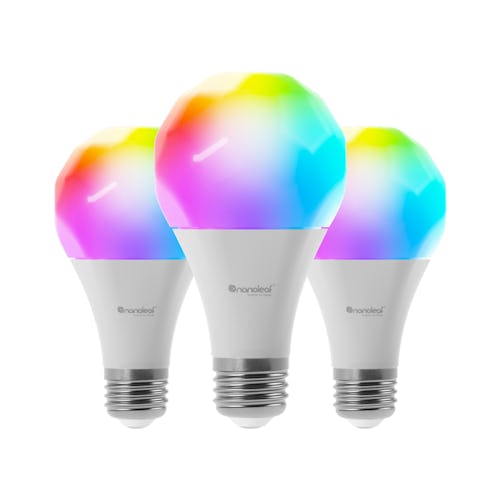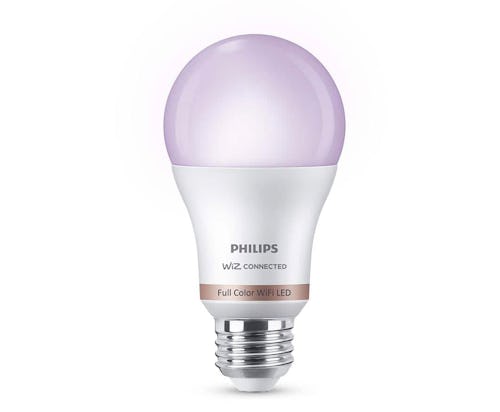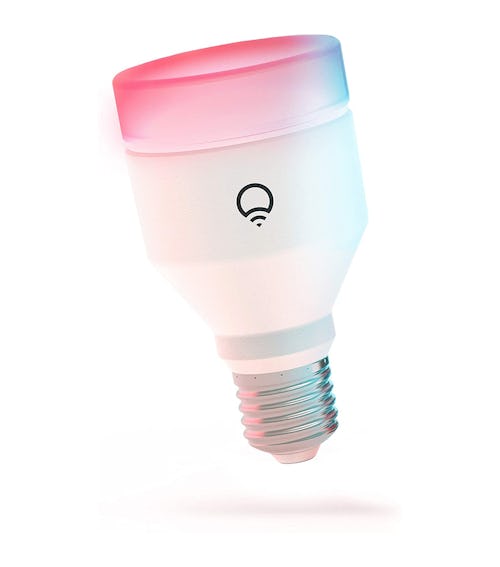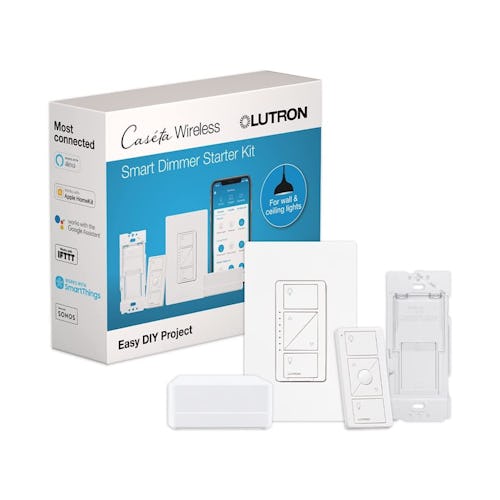
For a very, very long time light bulbs sucked on purpose. Not only were they absolute gluttons of energy consumption, they were designed to not last too long to keep consumers buying more of them.
Today’s light bulbs are amazing. Full stop. LED light bulbs consume a fraction of the power of traditional incandescents while still emitting bright, pleasing light that feels more natural to humans. Compared to compact fluorescent bulbs (CFLs), which emit a narrow band of light and contain toxic mercury gas, LEDs are a huge upgrade for those looking to save on their energy bill.
It’s also worth noting that LED bulbs last way longer than any other consumer light bulb. Most conventional LEDs are rated for 10,000 hours of run time; compare that to the few hundred hours incandescent bulbs were built for.
A few years ago I decided enough was enough and took to replacing every light in my home at once with an LED bulb. From the terrible fluorescent fixture that made working in my kitchen a headache, to the tiny incandescent candelabra bulbs found in my dining room.
If you haven’t made the switch to LEDs yourself, then take the opportunity this Spring Cleaning to get to it. Whether you’re interested in smart lighting or just want to get some better bulbs in your life, I'm here to be your guide to everything you need to know about LED bulbs.
Input may receive a portion of sales if you purchase a product through a link in this article. We only include products that have been independently selected by Input's editorial team.
Perfect the temperature
what color temperature you want to get
The first thing to know before you go out and buy a ton of LED bulbs is . The two most common color temperatures are 2700K (Kelvin) and 5000K. 2700K bulbs produce a very warm, basically yellow white light and are usually labeled as “soft white” bulbs. 5000K bulbs produce cooler light closer to natural sunlight and are often labeled as “daylight” bulbs. There are some bulbs with temperatures between 2700K and 5000K, like “cool white” 4000K bulbs or less warm “bright white” 3000K bulbs.
It’s important to keep these color temperatures in mind when shopping. If you have a room where you mostly watch TV with the curtains closed or are shopping for your bedroom, you’re probably going to want a lot of soft white bulbs. For spaces where you’re using lots of natural light like a living room, kitchen, or office, daylight bulbs are the best pick. Daylight bulbs are also great in bathrooms if you need accurate and bright lighting for applying makeup.
These six-packs include bright and dimmable LED bulbs equivalent to a 75W incandescent light, or 1100 lumens (lm). While we’ve only linked to A19-shaped bulbs, the most common bulb you’d need, there are LED equivalents for every light in your house. We recommend taking a fluorescent or incandescent light you’re trying to replace to a hardware store to find a suitable LED replacement.


What about smart lights?
I get it. Smart lights are great for lots of reasons like being able to set automations and change colors on the fly with some models. I personally own a few smart bulbs for these exact use cases. While smart bulbs are more expensive than conventional LED bulbs, as someone who’s used smart bulbs for a few years, I’d argue even perfect price parity with conventional bulbs wouldn’t be enough to get me to replace every light in my house with a smart light.
The reason for this is that smart bulbs are actually more limited than an old-fashioned light switch in some ways. If you put a smart light into a socket connected to a wall switch, that switch always needs to be flipped on. This means any smart bulb can only be controlled by a software button on your phone or a nearby voice assistant speaker like a Nest Audio or HomePod mini.
don’t waste money and replace every light bulb in your house with a connected bulb
This is not to say that smart bulbs should be avoided entirely, just where a conventional LED will do just fine.
The rule of thumb that I follow for my home is: smart bulbs for your lamps and standard bulbs for your ceiling sockets.
Smart bulbs for your lamps and standard bulbs for your ceiling sockets.
Unless you have switched outlets in your home, adding a smart bulb to a lamp eliminates the need for manually switching every lamp you own. Lampshades also help the look of multi-color lighting to be all the more aesthetically pleasing. Some smart home platforms also include some form of “adaptive lighting” for color-changing lights, that changes the color temperature of your bulbs throughout the day to mimic the color temperature of the sun outside. Speaking from experience, it really helps my body’s natural sleep cycle at night and energizes me when it’s time to work in the day.
If you’re looking for some affordable smart bulbs, Nanoleaf’s Essentials bulbs are basically unbeatable in terms of price to performance. These are my smart bulbs of choice thanks to their super bright whites, peaking at 1,100 nits, and the way they seamlessly tie in with my HomeKit-based smart home. They work with Amazon Alexa and Google Assistant, but are primarily built for use with Apple HomeKit and the HomePod mini.
These lights rely on Thread as their primary radio, which provides exceptional speed and energy efficiency when paired with a HomePod mini. They also have Bluetooth onboard as a fallback to work with other smart speakers. As long as you have a supported smart speaker in your home these bulbs enable all the same automations you’d get from more expensive bulbs like Philips Hue that rely on a hub.

If you want something even cheaper and are willing to sacrifice some platform compatibility and brightness, we’re also fans of the Philips Wiz Smart Wi-Fi LED bulb. Wi-Fi means you’ll never be without remote control via the light’s app, and they work well with Alexa and Google Assistant. There’s no HomeKit support, however, and these bulbs aren’t going to have the bright whites of the Nanoleaf Essentials. But, if you can live with those tradeoffs, the price here is hard to beat.

Want the best smart bulb you can find with no compromises? Is money no object? Then Lifx’s Wi-Fi bulbs are the ones to get. These lights match the 1,100-lumen brightness of the Nanoleaf bulbs for white light, but also have much brighter colors overall when you’re trying to set the mood. They also produce the broadest range of colors of nearly any smart bulb, and boast an impressive range of white light temperatures, from super warm 1500K to pure white 9000K. A great choice if you only want to smarten up a few lamps.

If you absolutely insist on making every light in your home smart, there actually is a good solution if you have the budget for it. You should still buy conventional LEDs for lights you control with a wall switch, but make sure you replace the light switches in your home with smart ones afterward. Smart switches offer the best of both worlds, maintaining quick manual control of every light in your home with a physical button press, while enabling all the great automation features smart lights make possible.
Lutron is the undisputed king of smart switches with its Caseta platform. The company sells switches for everything, plus some cool remotes you can keep around the house to avoid having to walk to the wall. Caseta of course works with all the major smart home platforms without relying on cloud servers. This means even if Lutron disappears tomorrow, your smart switches should still work for as long as you need them. The Smart Start kit includes a single dimmer switch, remote with wall dock, and a Caseta hub to get you started. Additional wall switches cost between $50 to $60 from there depending on what you need for each room.

You’ll be amazed by how great your home looks and feels when every light is an LED, and you’ll save money on your power bill too. The only regret you’ll have is that you didn’t make the upgrade sooner.







